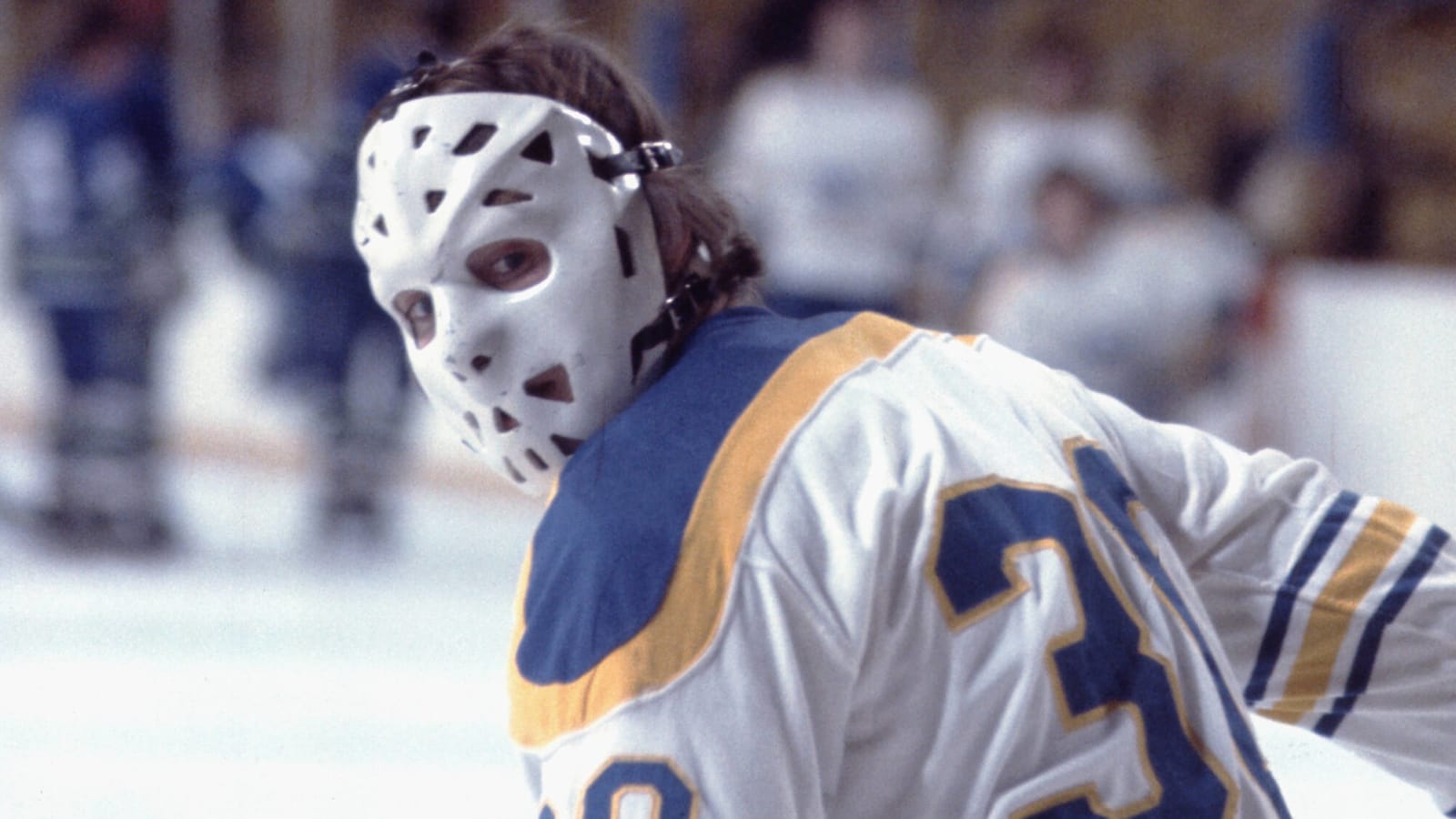
The hockey world mourns the loss of former NHL and WHA goaltender Dave Dryden, who passed away Oct. 4 at the age of 81.
He was an excellent goaltender, but people may not know that Dryden was a true innovator. He pioneered the first cage combination goalie mask and was an instrumental figure in equipment design.
Legendary mask maker Greg Harrison had plenty to share on what Dryden contributed to the position.
“Dryden would show up at Cooper (the hockey company now known as Bauer) when I was working there,” Harrison said. “He’d come into the design department and ask, ‘Why do we need all this leather on the glove and blocker? We can use nylon and make it lighter.’ ”
It was trial and error back then. The nylon worked well in areas of the equipment that didn’t come in contact with the ice very often. So Dryden, along with the equipment designers at Cooper, tinkered until they found the magic combination of weight and durability.
According to Harrison, many of Dryden’s ideas would end up in Cooper’s product line the next year. Retail buyers directly benefited from Dryden’s curiosity.
“He was such a humble man,” Harrison said of his friend. “He never received any credit. Not that I think he wanted it anyway.”
Dryden, who retired after the 1979-80 season with the Edmonton Oilers, was the first to wear a padded practice jersey that he sewed together on his own. More than a decade passed before the first padded practice jerseys were available in stores.
While impossible to verify, Harrison believes that Dryden was the first to attach arm pads to his chest protector. Goaltenders had always worn them separately before Dryden decided to bust out the needle and get creative.
I started playing goalie in the late 1980s with two-piece upper-body equipment. Yet Dryden had already laid the groundwork for today’s chest and arm protectors years before. By the early ’90s, two-piece protection was no longer available.
Dryden also left his mark on leg pad design.
“We made him a pair of pads, and on the inside edges we put about a ⅝-inch piece of wood,” Harrison remembered from his time working at Cooper. “But we found it broke. So we used a rounded PVC plastic extrusion instead. You can see it when he played with Edmonton. The pads had a sharp edge to them on the inside. It kept the puck from sliding through.”
Most of the innovations Dryden came up with weren’t that visible, but it was impossible not to notice when, in 1979 as a member of the Edmonton Oilers, he took the ice wearing a mask design that had never been seen.
“Dave knew that there were guys getting freak injuries,” Harrison said. “He made his own mask in Chicago with a square mouth hole, and then he made another one that got used in Buffalo. He painted that one gold. When Dave went to Edmonton, he grafted fiberglass to the top so it would cover his head. On the inside you could see where the old mask ended and where the new one started.
“With the cage combination mask, how it occurred, (Dryden) came into Cooper with an idea,” Harrison recalled. “He had the front half of an SK600 player helmet, and he had a wire cage that he had soldered together himself. And he had the back piece of one of his other masks.”
Harrison remembers it like it was yesterday. He was still working for Cooper at the time but had a burgeoning mask-making business on the side.
“Dryden told Cooper: ‘I want a mask that fits like a fiberglass mask, but give me the eye protection of a cage. And it needs a backplate,’” Harrison recalled. “Well, Cooper refused to make it. They said it has to be a helmet.”
When his employer said no, Harrison saw an opportunity.
“I told Dave: I’ll design that,” Harrison remembers fondly. “He went to training camp in Europe with the Oilers, and he got nailed one of the first times he wore it. Dave said that he didn’t feel a thing. He got hit right in the center of the mask and nothing happened.”
Today, every goaltender in the NHL wears a cage combination mask. I spent my entire career past the age of 13 wearing one. If it hadn’t been for Dryden’s innovation, goaltenders might still be using a traditional helmet and cage combo.
I became a goaltender because of the equipment, and while I knew the evolution of our gear, I wasn’t sure who was responsible for it. Turns out, Dryden had a hand in developing just about everything.
Thank you, Dave. Hockey wouldn’t be the same without you.
More must-reads:
- Former NHL goalie Dave Dryden dies at 81
- Longtime Lightning forward scores twice in possible home swan song
- The '100 catches in an NFL season' quiz
Breaking News
Customize Your Newsletter
 +
+
Get the latest news and rumors, customized to your favorite sports and teams. Emailed daily. Always free!

